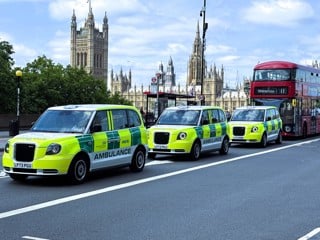Chiltern Transport Consortium provided the blueprint – and evidence that centralised fleet services across several police forces can work – and now more alliances are being struck among the country’s constabularies.
One of the most notable is Essex and Kent, which now falls under the leadership of John Gorton, formerly Essex Police head of transport.
Gorton has previous: he trialled a collaboration between Essex, Norfolk, Suffolk and Cambridgeshire constabularies a couple of years ago.
The knowledge gleaned from that project has been invaluable in his new role, although the original plans came to nothing due to the complications of bringing together so many forces in one go.
The latest consortium brings together Essex Police’s 860 vehicles and Kent’s 1,100 to create an operation with almost 2,000 vehicles. It also manages a couple of hundred vehicles for other organisations.
Gorton set out to identify £1.2m savings annually through the collaboration.
He has already identified savings worth £1.3 million through staff redundancies and efficiencies, such as centralising finance and HR.
Both forces are also going through an operational restructure – a requisite of every force nationwide – focusing on efficiencies and cost, including fleet size.
Some vehicles are likely to go, increasing the average fleet mileage, but Gorton is confident that most will be retained.
“A police officer’s effectiveness increases by a factor of five if they have a car because they can move around. If you reduce the fleet size, it reduces their effectiveness,” he says.
Advancements in technology will further boost officers’ efficiency, enabling them to stay out on the road for longer.
“We are changing the way policing happens, for example having technology in the car that enables an officer to do everything – like a mobile office – so they don’t have to come back to base all the time,” explains Gorton.
Despite rapidly identifying major cost savings across Essex and Kent, Gorton is not blind to the challenges he now faces in bringing together the two forces, not least managing different cultures and working practices.
It requires pragmatic understanding and good communications.
“Both organisations have to have sufficient confidence and a pragmatic outlook to see it’s for the overall benefit of the two forces,” he says.
“We are looking to process-map everything that we do. Through that we will understand which functions can be consolidated and which need to be delivered locally.”
He adds: “It is important to ensure there is no cross-subsidy between the two organisations – both Essex and Kent must receive what they are paying for. This is something that Chiltern has done very well.”
The 18-month consolidation programme has five key phases:
1. Operational convergence Where the forces have the same vehicles and the same usage to create standardisation. It requires an agreement on the specific nature of each vehicle’s role with officers.
2. Suppliers e.g. consolidation of two software systems into one.
3. Fleet departments Consolidating while keeping skilled staff. Part of the process will be to retain centres of excellence, which means that some operations will be kept in Kent and some in Essex.
4. Account management Cross-subsidy and income generation – for example, on workshop services and fleet management where the new operation manages other organisations’ fleets.
5. Consolidation of workshop activity Identifying any duplication and reducing the number of sites as appropriate.
At the same time as running the programme, Gorton and his team also have to deliver ‘business as usual’. “It’s a bit like tuning an engine while it’s still running,” he quips.


















Login to comment
Comments
No comments have been made yet.